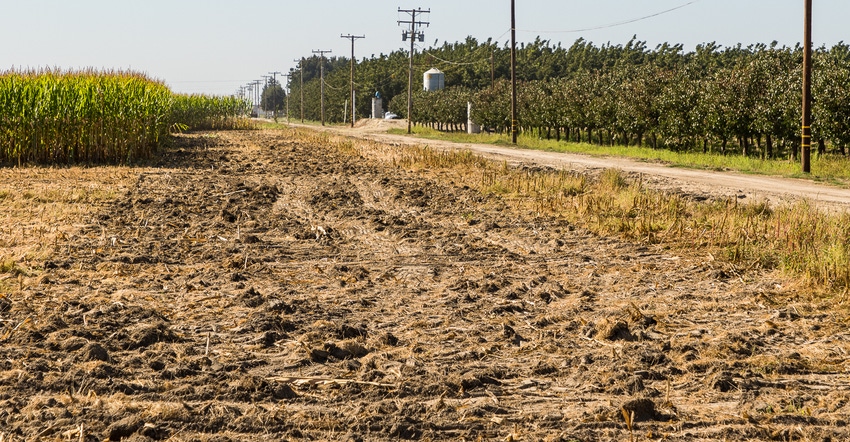September 18, 2018

Like its neighbors, Tulare County saw a marked improvement in gross agricultural receipts in 2017.
Tulare County’s 2017 crop value of over $7.03 billion reflects a 10.5 percent boost from the previous year, following similar trends seen in other major Ag-producing counties such as Fresno and Stanislaus.
“Table grapes had a good year,” said Tulare County Agricultural Commissioner Marilyn Wright.
As gross values go, grapes moved into Tulare County’s No. 2 spot at over $904 million, behind milk at $1.77 billion as the most-valuable commodity produced. Orange values (Navels and Valencias) were third among the top commodities at almost $771 million.
Gross table grape prices in the county were up over 43 percent to $1,920 per ton, on average. That reflected a $580-per-ton increase in the price of fresh market grapes. Table grapes were harvested from just over 38,000 acres, a 7 percent increase in acreage over the previous year, according to the annual crop report.
Citrus had a mixed pricing year, depending on variety. Valencia prices were up a little over $10 per ton on slightly-reduced production. Conversely, Navel prices were down about $14 per ton on production that was down about 8 percent to 905,000 tons of total production.
Tangerines – including Mandarins, Tangelos, Tangor, and seedless varieties – saw a 17 percent boost in harvested acreage as recent plantings come into production. Yields continues to increase on the newly-planted fruit, which last year totaled 266,000 tons of fruit. Prices averaged a few dollars less per ton, according to the county’s report.
Still the single-largest commodity produced in the county by gross value total milk volume was off 1.3 percent, even though the county gained about 900 dairy cows, Wright said. Still, that percentage loss reflects reduced total output of 143 million pounds on total, countywide milk production of over 10.89 billion pounds. Only three states – New York, Idaho and Wisconsin – produce more milk by volume than Tulare County.
Trends
For Tulare County supervisors, who officially receive the report from the Ag Commissioner at a public meeting, the announcement is typically done with a little fanfare as the “Big Three” counties of Tulare, Kern and Fresno have long had a bit of competition between the three. For decades Fresno led the counties in gross agricultural value with Tulare and Kern battling it out for second place.
In 2013 Tulare assumed the crown, which it held for three consecutive years as the top-valued farm county in the nation by gross sales. Kern bumped Tulare from that position in 2016.
Wright said 2017 showed a marked decrease in permanent acreage additions when compared to the previous year. Last year 13,000 acres of vines and trees were added. These largely replaced row crops, which tend to be less profitable overall. In 2016 growers added over 50,000 acres of permanent plantings to the county’s farmland – again, much of that replaced row and field crops, such as cotton, alfalfa and vegetables due to the relative profitability of tree nuts.
The popularity of pistachios continues to rise as bearing acreage grew by 4,800 to 64,800. Per-acre production was up slightly in the alternate-bearing crop, boosting the nut crop’s value on nearly 91,000 tons of nuts to over $342 million. Grower prices fell about 13 percent to about $1.89 per pound in 2017.
Almond plantings continue to come into production as harvested acreage grew 6,500 acres, or about 10.6 percent. Per-acre yields were down slightly but total production was up just over 2,000 tons as prices improved by more than 5 percent.
Walnut acreage climbed slightly as average yields softened slightly. Total production in the nut crop was down about 12 percent as grower prices rose 18 percent to $1.06 per pound.
Wright also noted that where milk’s value was once over 30 percent of the county’s gross tally, that figure is now around 25 percent as dairies continue to go out of business.
Tulare County is the leading export county in the nation, Wright said. The county’s leading export partner continues to be China, which is a major buyer of fresh-market citrus. Over 47 percent of the county’s orange crop is exported, making it the leading export commodity in the county.
You May Also Like




